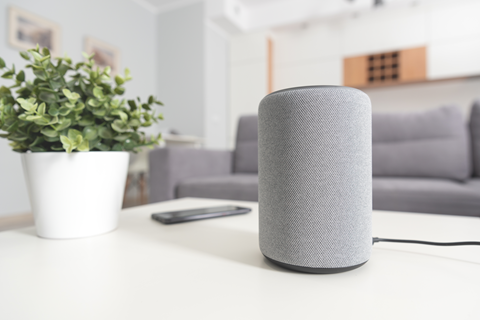IT/Telecom
Smart Speakers Provide Accessibility to Blind or Visually Impaired, But Design Prevents Full Use

Current design trends for smart home devices which rely heavily on visual feedback are digitally excluding blind and visually impaired people from a sophisticated smart home experience they would reap the most benefit from. The constant need to adapt appliances to create tactile feedback on slick flat digital screens is preventing the sight loss community from using smart home technologies and appliances to their full potential.
Research conducted by Strategy Analytics explores the needs of people who are blind or visually impaired and their relationship with technology. A new series of reports from the User Experience Strategies service at Strategy Analytics identifies key design implications with respect to user needs, technology use and pain-points for the sight loss community when using smart home technologies and appliances, smartphones, or while travelling.
Commented Lisa Cooper, report author and Director, UX Innovation Practice,
“Smart home devices such as smart speakers were used by the vast majority of the blind or visually impaired participants in our research. But while all the participants agreed that they make everyday life far more accessible, most were not using the smart speakers to their full capacity. The three most popular use cases were to know what the weather was, set timers when cooking and to access recipes, rather than to connect to other important smart devices around their homes.”
Continued Cooper,
“Given the sophisticated user experience that smart speakers could provide this community, there is a clear need to simplify the experience. For example, buttons on the devices themselves should be more prominent so they are not touched by accident, and set-up should take into consideration that a blind or visually impaired person cannot “see” to carry out all the steps required – the perceived simple task of scanning a QR code could actually be impossible.”
Commented Kevin Nolan, VP, UX Innovation Practice,
“Form should not win over function. Digital inclusion is relevant to a large subset of the population – not just those who are blind or visually impaired, but also those who have an injury or temporary illness which may affect their ability to access devices essential for everyday life. Form and function are not mutually exclusive, and it should not be the case that essential appliances become prohibitive because they are considered too complicated to use, or indeed too expensive to adapt.”
Added Nolan,
“Further discussion on digital inclusion can be found in Episodes 13 and 14 of Strategy Analytics’ weekly podcast UX Soup, “Accessibility and Digital Inclusion for People with Sight Loss”. Our hosts’ interview Martin Ralfe, Technology Services and Skills Lead for The Guide Dogs for the Blind Association in the UK and discuss the importance of everyday tech for people with visual impairments, the most accessible devices, and the importance of digital inclusion. It really is compelling listening.”





